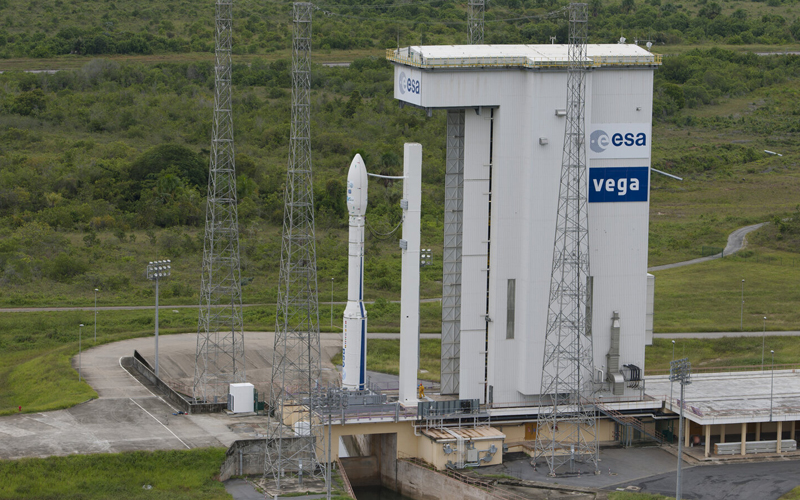
Two of the four tanks necessary to power the fourth stage of the final Vega flight disappeared several months ago, leaving Avio scrambling to find an alternate solution.
The Vega AVUM fourth stage stands at 1.74 meters tall with a diameter of 1.9 meters. The stage is equipped with the Ukrainian RD-869 UDMH/NTO liquid-fueled engine. The propellant for the engine is stored across four spherical tanks.
A source talking to European Spaceflight revealed in early October that two of the four propellant tanks for the final Vega flight had gone missing. Last week, a second source independently verified the story.
As of late 2022, the final flight of Vega was to have been the European Space Agency’s Biomass forest measuring satellite, the launch contract of which had been signed in October 2019. However, in early 2023, the agency began to consider that the launch of its Sentinel 2C Earth observation mission was more urgent. The decision to swap out Biomass for Sentinel 2C was officially made during the summer. The contract to build Sentinel 2C and 2D was awarded to Airbus Defence and Space in January 2016. The contract was worth more than €280 million.
The two propellant tanks that went missing were housed in an Avio production department in Colleferro that had undergone renovation work. At some point following the completion of the renovations, the two tanks were found to be missing.
According to the initial source, the tanks had not been entered into a company-wide asset management system that tracked the location of all vital Avio components. This ensured that the teams tasked with investigating the disappearance had very little to go on when beginning their search for the missing tanks.
Despite the futility of the search, the tanks were eventually found. This was, however, not the good news Avio had hoped for. The tanks are, unfortunately, not in a usable state. They had been crushed and were found alongside metal scraps in a landfill.
At the moment, Avio does not have any way of acquiring new tanks for the mission, with all Vega production lines having been shut down. Avio is, as a result, exploring two options in an attempt to salvage the mission.
The first potential solution is using the four tanks that were used during the vehicle’s qualification phase before its maiden flight in 2012. The company hoped to utilize two of the tanks to perform re-qualification tests, leaving the other two for the flight itself. However, this solution is not without its challenges. These tanks have been sitting around for over a decade, and the integrity of several elements that would be incredibly difficult to inspect would be next to impossible to guarantee. While this route is still being considered, there is also an alternate plan in the works.
As a last-ditch effort to save the final Vega mission, Avio is now looking at modifying the AVUM upper stage for use aboard Vega. This Frankenstein solution, which would use elements of a Vega C AVUM+ stage, would be completely unproven. This makes trusting a critical payload with what is essentially a test flight a challenging ask.
Regardless of which solution Avio goes with, the company is unlikely to be able to fulfill its commitment to launch the final Vega flight in the first half of 2024.
European Spaceflight asked ESA, Avio, and Arianespace if they would like to comment on this story, but all declined.
Correction: An earlier version of the article stated that Biomass was being launched aboard the final Vega flight in 2024.




